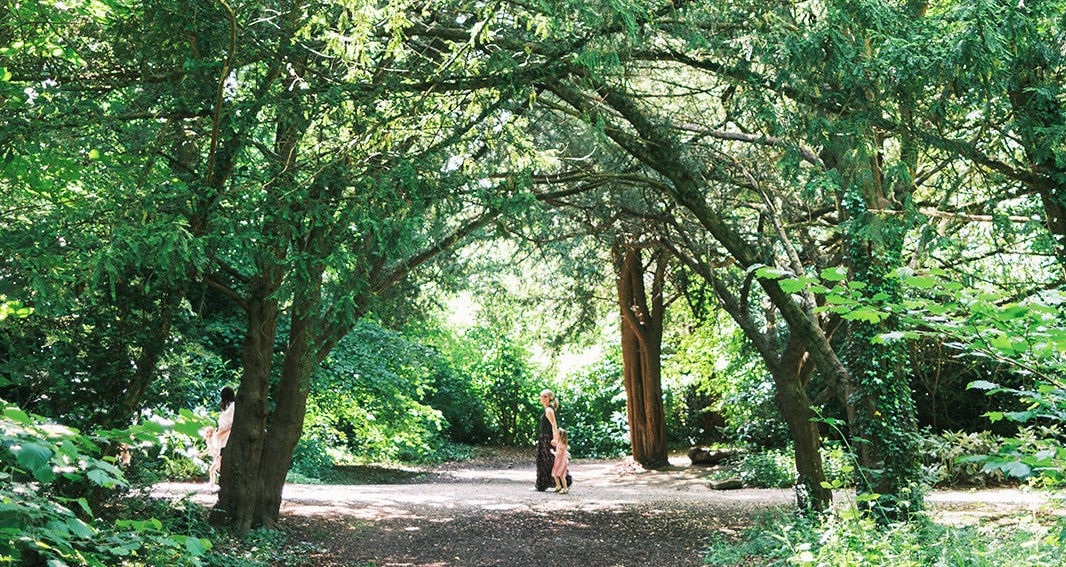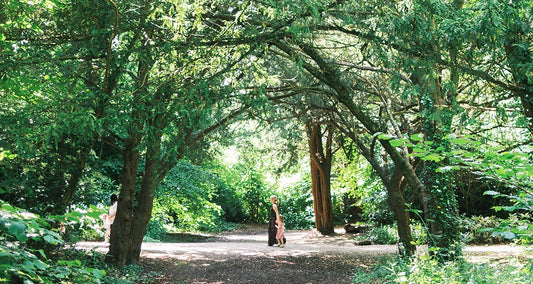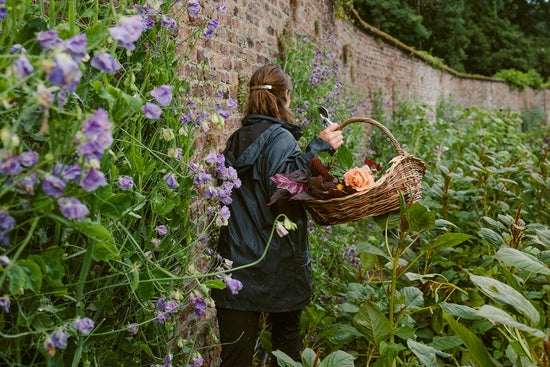Yay for long Midsummer days; giving way to family moments spent in rock pools, cold clear seas and open spaces, or care-free in parks and back gardens – Outdoors is where I like to be with our children!
My brother-in-law Sam Shephard has years of experience of rock-and-bog-hopping as a kid and now as a father and marine biologist, he has a keen drive to foster a love of nature in future generations. I love his way of meandering with kids through nature, his approach is at once blindingly obvious yet, graspable and inspiring, and so I invited him to put pen to paper for us here.
Learning about nature with children
Have you ever tried to walk like a child? Not a toddler, but maybe an eight-year-old boy? Eight-year-old boys never walk in straight lines - every few steps there is a new idea and a new adventure. In the forest, they run from dead tree to fungus to very-muddy-puddle and back again. There is a constant flow of questions and semi-articulate shouts. It seems to be necessary to throw sticks, fall down holes and wade in slightly-too-deep streams. New coats get caught in ancient barbed wire, hats are lost forever; it’s a sort of high-speed reverse makeover: Little Lord Fauntleroy to Huckleberry Finn in 300 yards.
Of course, this craziness makes it almost impossible to ‘take’ small boys for a walk, or at least what most adults mean by a walk. There is little chance of getting from A to B when your juvenile companions are trying to fit the rest of the alphabet in along the way. It is also very difficult to identify a common objective; children often have little sense of ‘landscape’ and will find much more interest in an exceptionally large cowpat than in tourist-guide vistas. Furthermore, they are totally uninspired by walking for its own sake, i.e., as a form of exercise. As soon as they realise that there is some sort of cardio-vascular agenda, they instantly assume all the dynamism of a slug. At least until they forget that you exist and return to frontier jungle mania.
Sometimes, I try to find common ground by suggesting hide-and-seek. This is usually successful, although defining an end point can be difficult. The whole operation becomes a little counterproductive as dusk falls and your youngest determinedly counts to 107 (for some reason) before disappearing boldly into the gathering darkness. This is almost always followed by accident and minor injury, and a half-mile walk home carrying two hundred-weight (at least) of tearful offspring. Similarly, formal nature walks are a mixed blessing. We have developed a fun form of scavenger hunt, where each child must gather a collection of leaves and feathers and twigs. The problem here is balancing the needs of jungle boy with those of his little brother and (even more treacherous) his 12-year-old elder sister! It is difficult for the younger ones to feel good about themselves when the eldest has just located 23 different species of native grass…and woven them into an anatomically perfect and life-size sculpture of an elk.
Given the challenges of family walks, it can be easy to adopt a rather military attitude and stride firmly ahead with a line of weeping children trailing along in the rear. Alternatively, one can bow to the seemingly inevitable and trudge along at a resentful snail’s pace while the kids bound around oblivious to your ‘noble’ parenting sacrifice. Even the most successful parent-led games fall somewhere in between.
Fortunately, there is a better solution – walk like a child! It has taken us a long time to realise that children’s sheer delight at creation can be re-captured. You just have to change the agenda. Instead of ‘going for a walk’, you must simply head out and see what comes. This could mean running madly through the forest following deer tracks, or sitting damply for two hours bailing one puddle into another to create a constant flow towards a final puddle 100 yards and three children further down the trail. We have oohed and aahed at deadly poisonous fungi, built camps out of fallen branches and carefully distinguished very large rabbit poo from very small deer poo. The critical requirement is willingness to stop indefinitely at something apparently boring or rush away almost immediately from something you might have found fascinating.
Of course, this kind of walk can be gently directed. I often head out alone, which gives me ideas to motivate rainy-day kids who need their brains jump-started. Solitary ‘childlike’ walks facilitate authentic connection with the outdoors and help develop participation in recurrent natural events. In this way, the seasons take on a recognisable character which is expressed in anticipated tones of plant and animal life. A winter dusk can comprise only a sudden blackbird whose cry accentuates the desolation; hibernation unfolds in the infinitesimal emergence and then exponential drama of spring. By late summer, nature seems to have assumed a quiet domesticity. We can imagine a hedgerow suburbia peopled by neighbourly and well-fed creatures arranged in polite food webs. In this season, I look to the hills for adventures that diminish childhood energy to possibly-fall-asleep-before-tomorrow level.
Last week we hauled two small children up to a mountain lake. The open hill can be difficult to read, but one can still focus on what ecologists call ‘edge’. Where does the rough pasture merge into heather, or heather into rock? Such structural transitions are extremely dynamic and productive. I was leading two girls in various stages of uphill revolt, when we came across someone’s bijou home-under-a-rock. Fox holes are not typically very charming, but this shallow den looked south across the valley, and the entrance was decorated pleasingly with moss and lichen. A tiny path emerged from the growing bracken and lying on the doorstep was a length of sheep’s vertebrae – still pink and fresh, but well-gnawed.
I called quietly back to the girls, gesticulating madly to shift them from ecological-disaster-on-legs to silent-lovers-of-nature. They crept up with exaggerated care, stood around the fox’s patio and peered in. Instant excitement and a flurry of ‘whys?’ Children are fascinated by nature, but they often seem to focus on mechanism: Why does this happen? How does this happen? For me, the processes - predator and prey - elicit more reflection, even a delightful sadness. I suppose this is our broader context; the cycles of creation tie us so closely to something transcendent. The world is perpetually drawing life out of death - but how could it be otherwise when renewal is engraved into every atom?
A short while later, we were walking through a landscape of huge glacial boulders. I was carrying the (wriggling) four-year old and hopping (precariously) across a deep crack, when a small shape whipped past my peripheral vision. Looking down, I was delighted to see a small, white-tipped tail disappear under the very rock on which we stood. A moment later and ten feet away the older girl burst out into a smiling shout – “daddy, daddy, a baby fox!” A fleeting glimpse, and again, the same amazed delight from the girls. Complete focus and animation, total engagement in the present. I guess this is a sort of mindfulness by overwhelming wonder and pressing glimmers of meaning. We see more clearly through the lens of childhood. Not by rejecting maturity, but by tempering our experience with simplicity. This afternoon on the hill, the walking needs of adults and children converged into something quite humble, and deeply satisfying.
Sam Shephard








